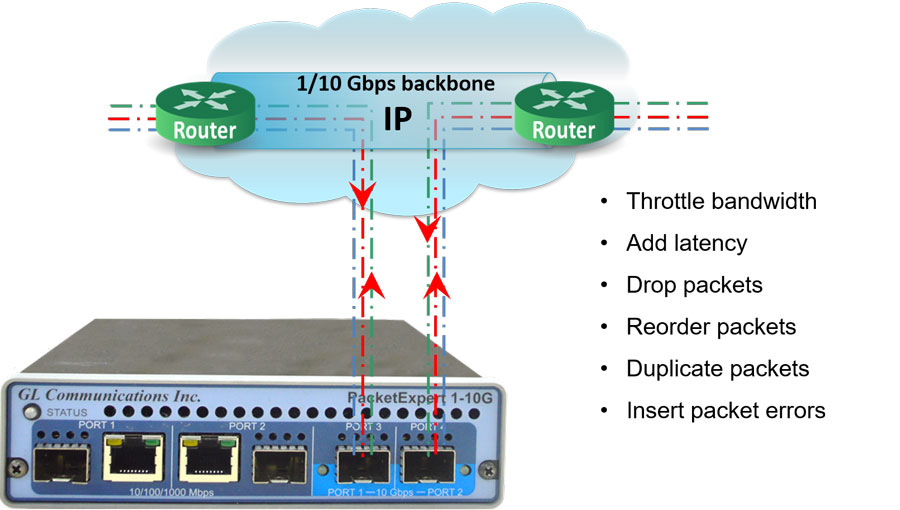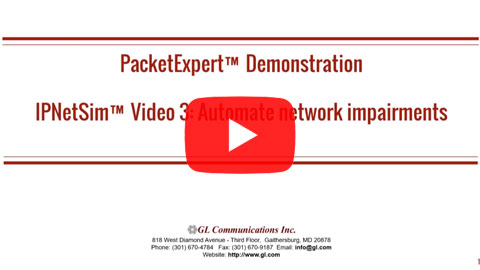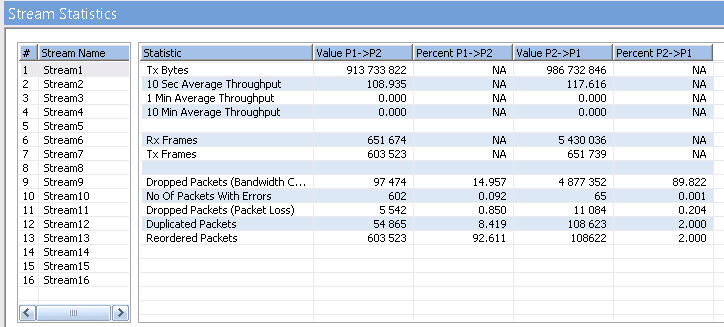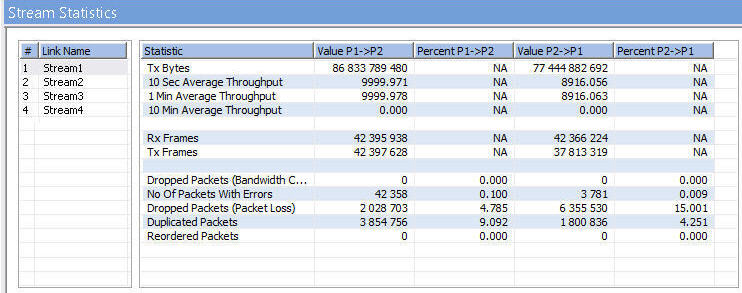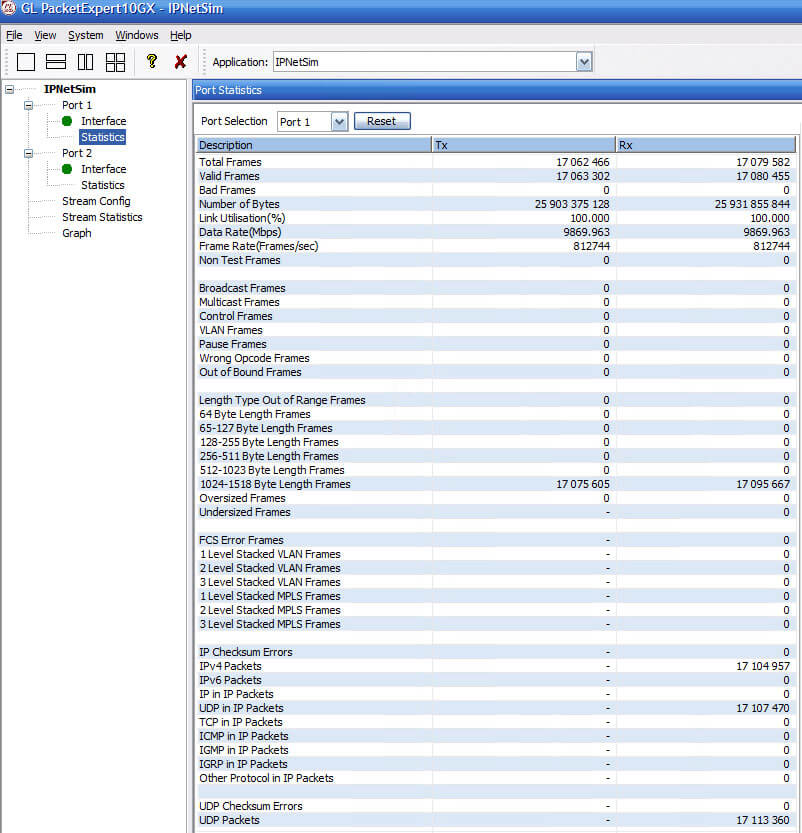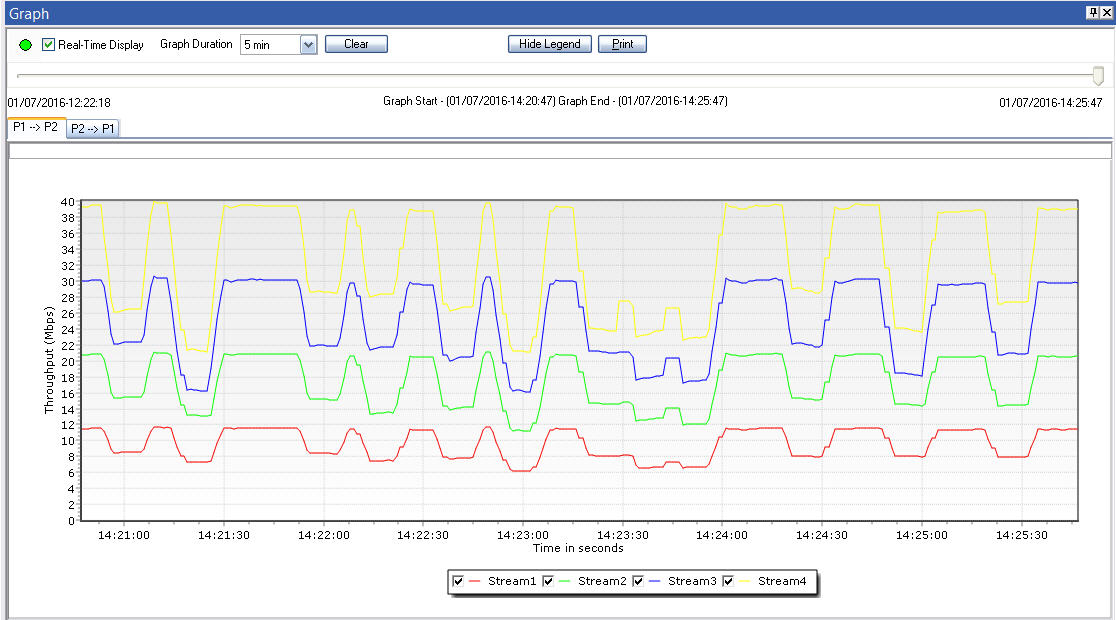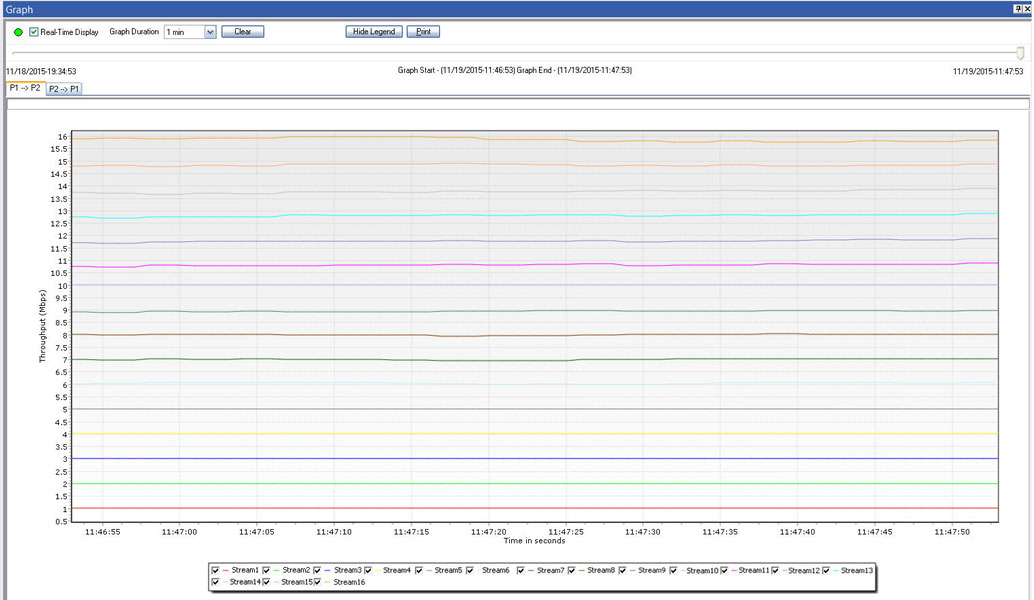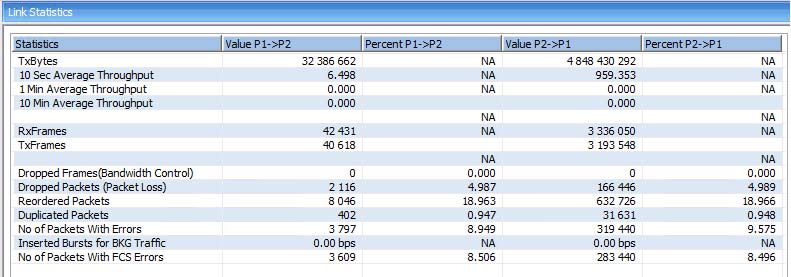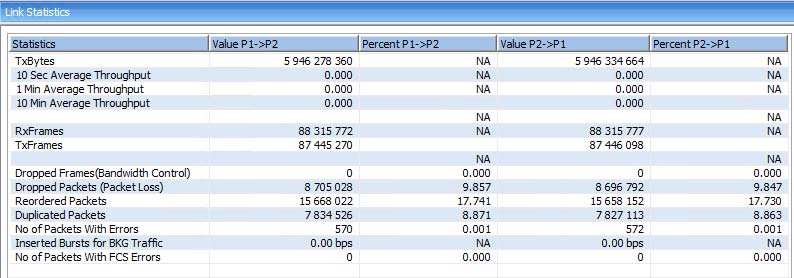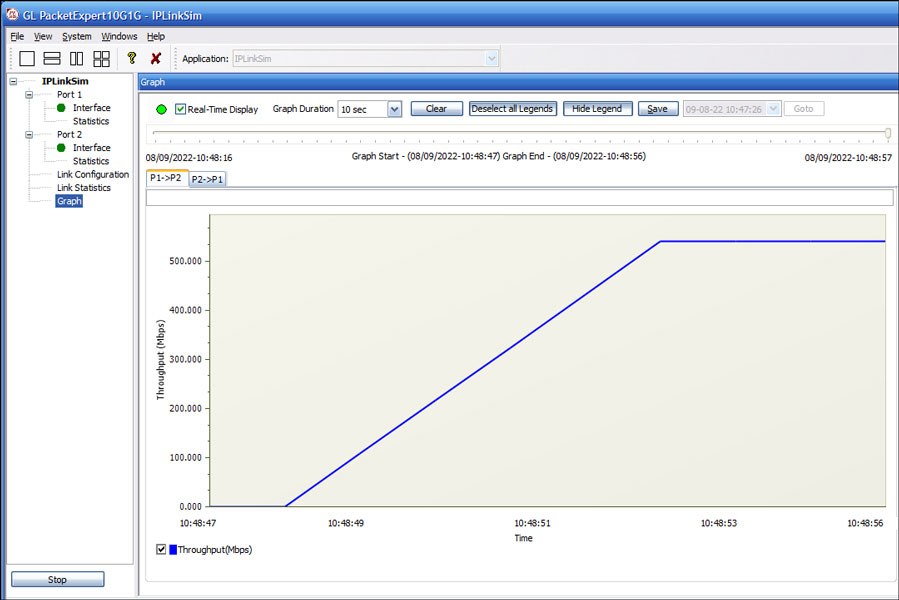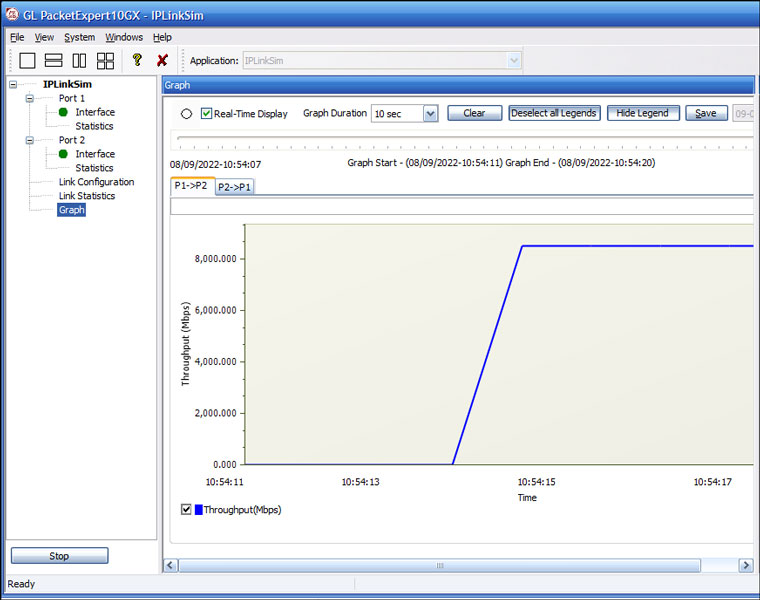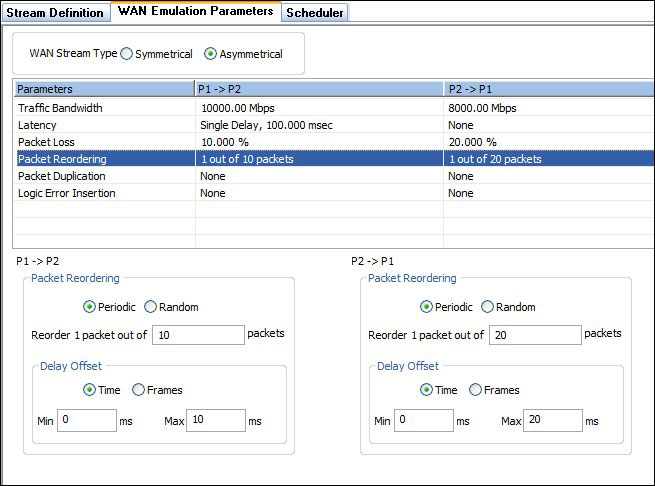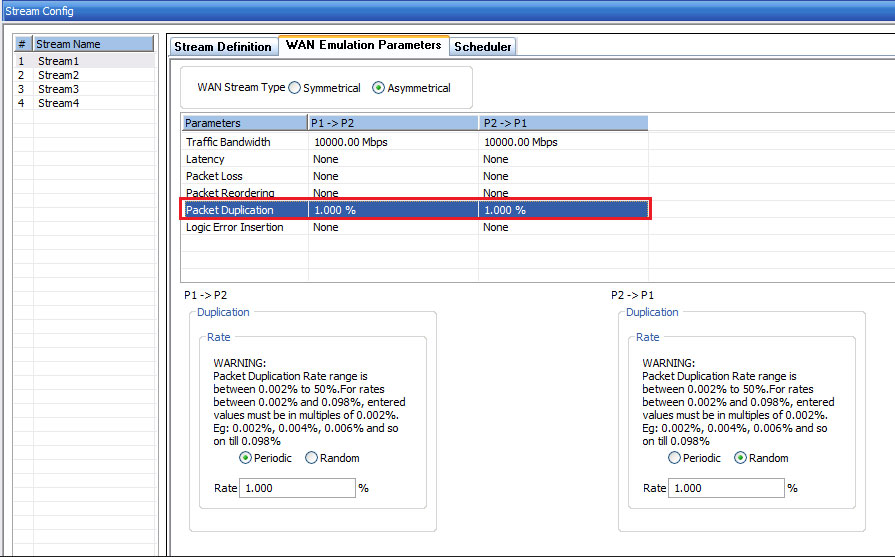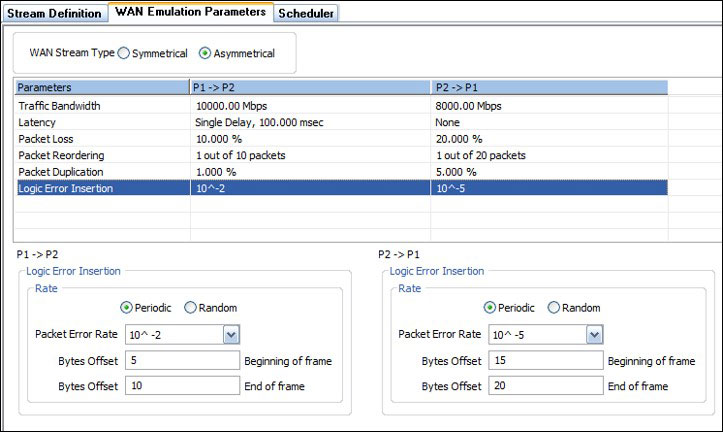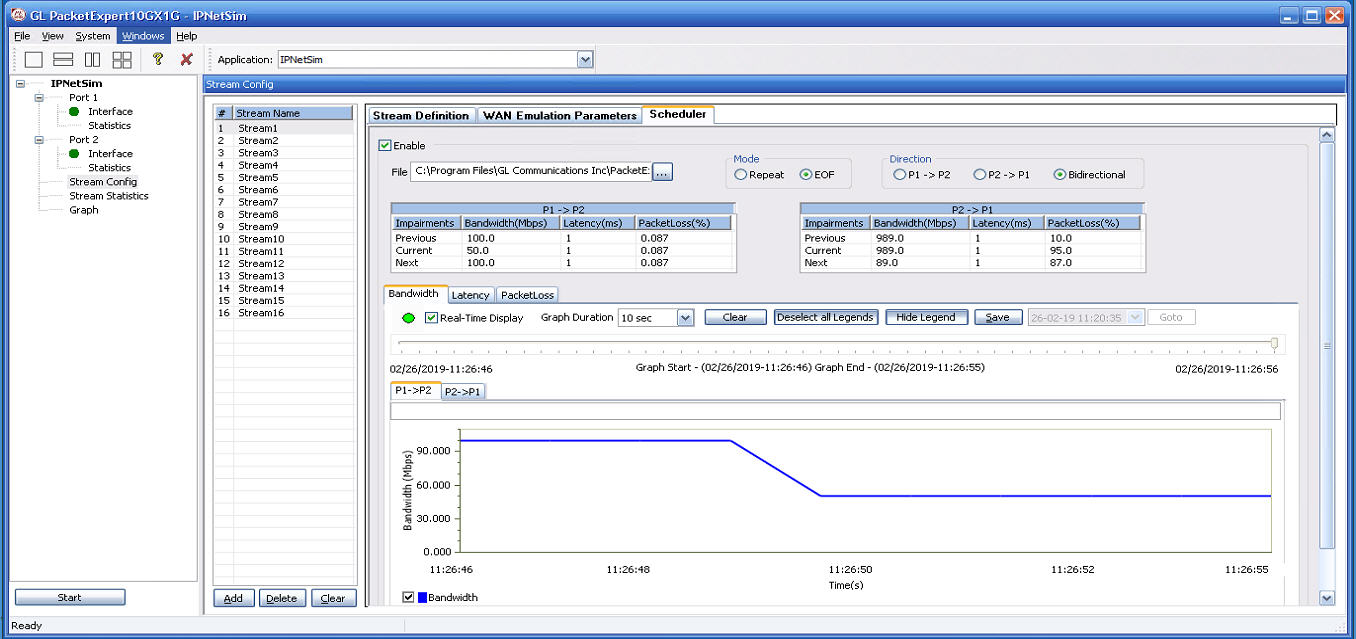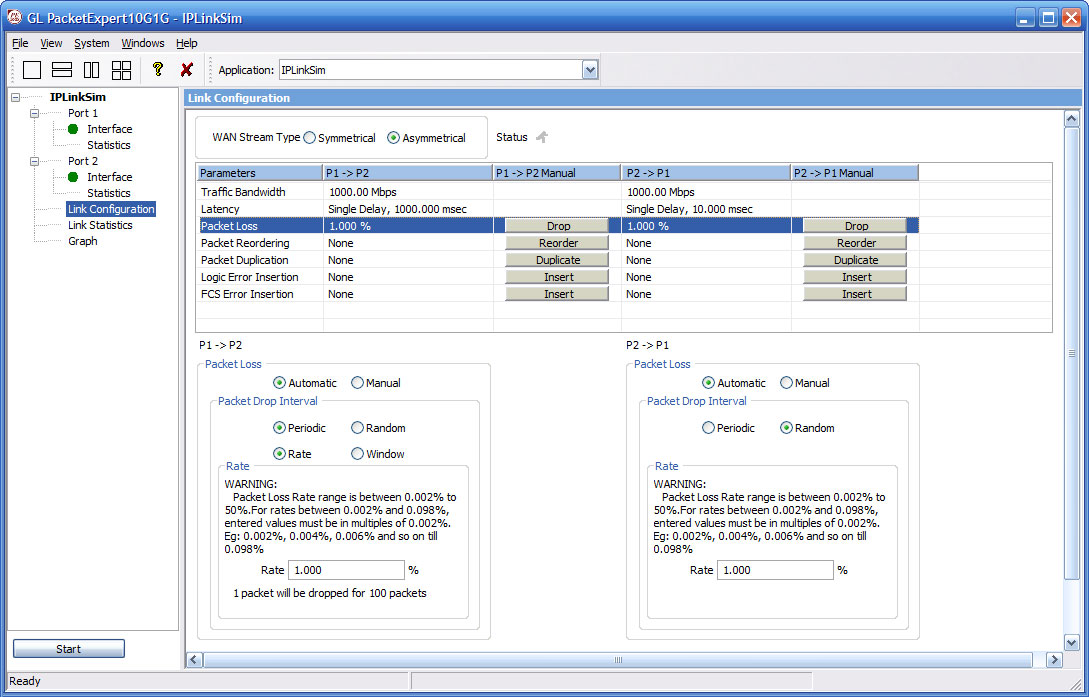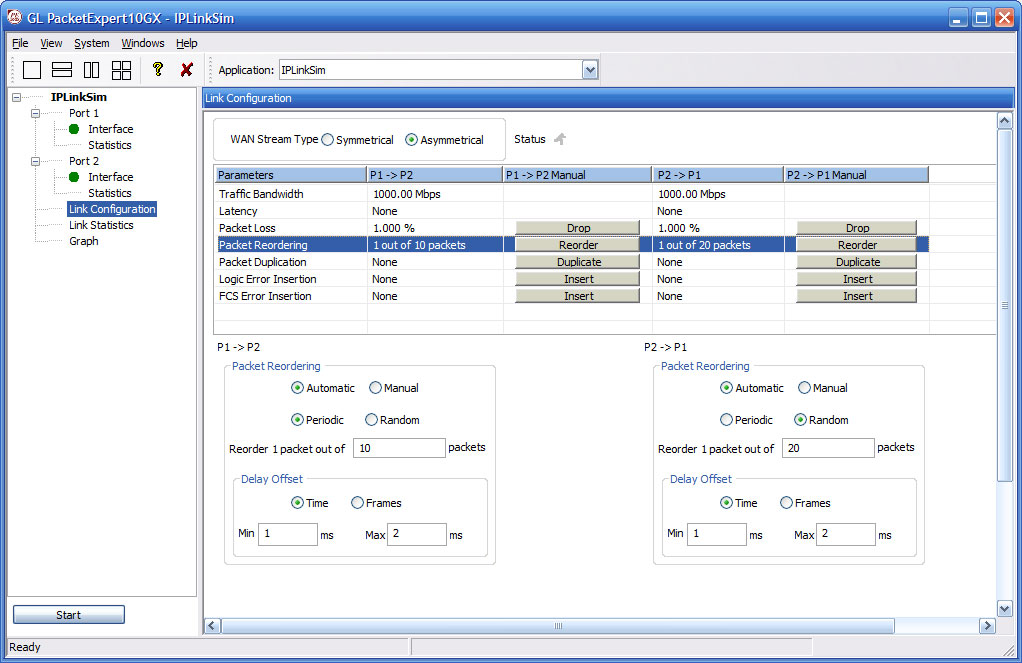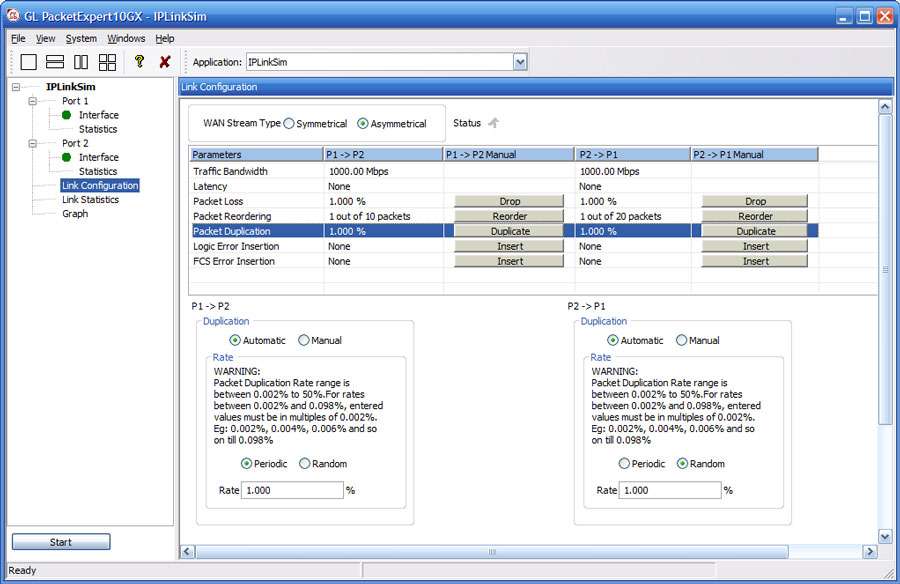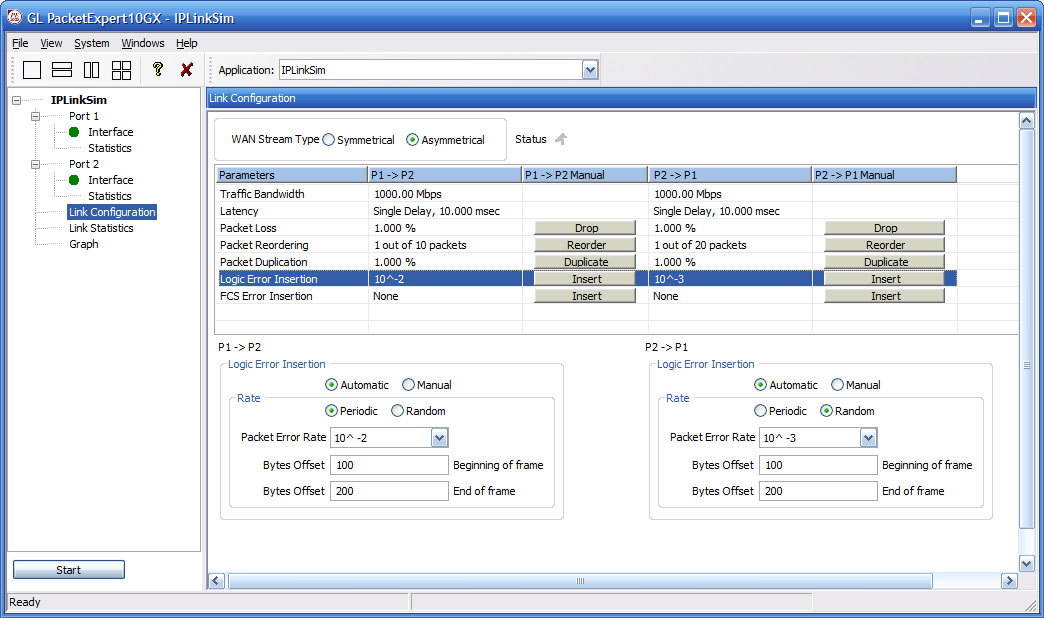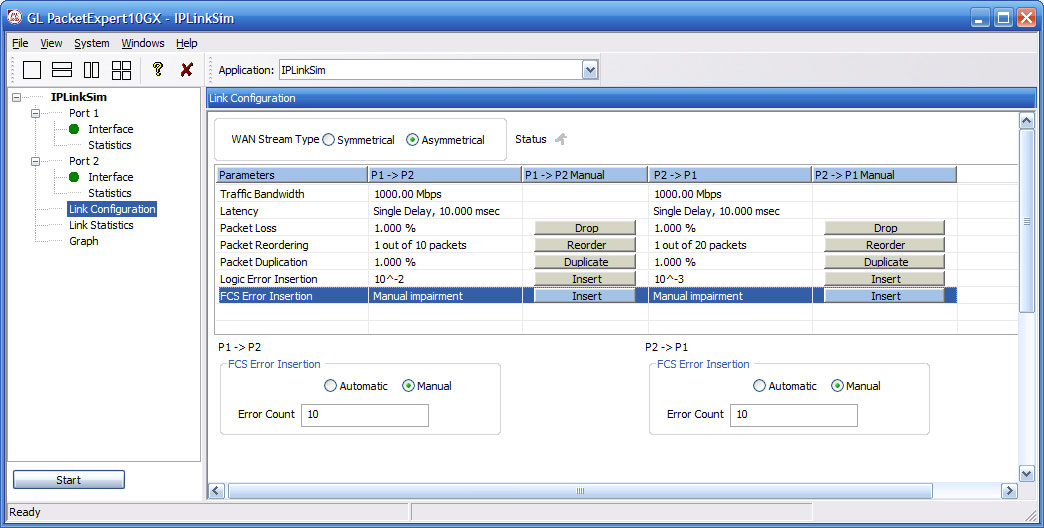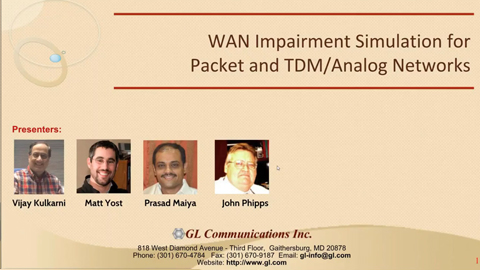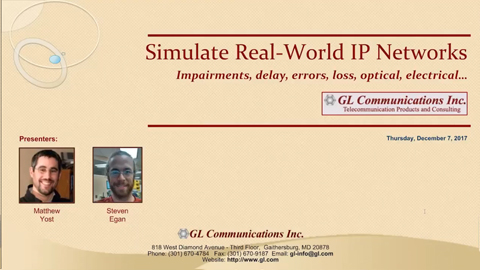IP WAN Emulator (IPNetSim™ & IPLinkSim™)
IP WAN Link Emulators test the performance of real networks by emulating impairments such as packet loss, packet corruption, packet duplication and packet reordering.
Request a Demo / Quote BrochureOverview
GL’s IP WAN Link Emulators test network performance by intentionally introducing impairments such as packet loss, packet corruption, packet duplication and packet reordering onto the network. Equipment manufacturers, network engineers, application developers and service providers can safely and reversibly introduce these impairments and study the subsequent behavior of the network or application.
IPNetSim™ and IPLinkSim™ (IPN507) are optional applications available within the PacketExpert™ (PXN100) platforms.
IPNetSim™ emulates a bidirectional WAN IP Link with a 10 Gbps or a 10/100/1000 Mbps full duplex link. For each direction, incoming traffic can be identified into separate user defined streams (up to 16 streams for 1 Gbps pipe and up to 4 streams for 10 Gbps pipe). These user defined streams can be modified to simulate network impairments.
IPLinkSim™ supports a single stream WAN IP Link with a 10 Gbps or a 10/100/1000 Mbps full duplex link, where all the incoming traffic is streamed as a single link which can be modified to simulate network impairments.
Both IPNetSim™ and IPLinkSim™ applications are available as rackmount appliance mTOP™ (MT001). mTOP™ solution (MT001), is a 1U rack mount enclosure within which PacketExpert™ 10GX (PXN100) USB units can be stacked to provide high density GigE ports form factor solution for testing GigE switches, routers and network conditions. The multi-device appliance incorporates all the features of a single portable unit along with the necessary PC hardware with Windows® OS and remote accessibility via Ethernet Remote Desktop.
Simply connect PacketExpert™ IPNetSim™ or IPLinkSim™ unit in series with existing optical or electrical links and introduce any impairment type to test the various applications in the lab prior to live deployment.
Both IPNetSim™ and IPLinkSim™ provide several user-defined impairments such as bandwidth throttling, latency, jitter, packet loss, packet reordering, packet duplication, packet corruption, error insertion, etc. For example use bandwidth throttling to simulate a slow WAN link like RS232/DSL/Modem/T1/E1/T3/E3 etc. Or increase packet latency to simulate long network paths. In addition to the above listed impairment types, IPLinkSim™ can also emulate congestion in the network by generating additional background traffic.
Both IPNetSim™ and IPLinkSim™ supports Command line Interface (CLI) to access all the functionalities remotely using Python, C# clients and MAPS™ CLI client/server architecture.
Main Features
- IPNetSim™ operates in multi-stream mode. Emulates bidirectional multiple WAN Link (16 streams on 1 Gbps ports and 4 streams on 10 Gbps ports) per unit
- IPLinkSim™ operates in a single stream mode and emulates only 1 bidirectional WAN Link per unit
- mTOP™ offer rack-mountable, high density, multi-device support. Stack multiple rack units to handle large number of ports. Scalable solution for unlimited number of ports
- Emulate WAN conditions separately and independently on each direction. Acts as a transparent bidirectional link or a simple Ethernet Bridge for easy integration with any test setup
- ”Stream Definition” feature in IPNetSim™
- classifies traffic on each port into separate streams (up to 16 streams on 1 Gbps ports and 4 streams on 10 Gbps ports); Streams can be defined with various header fields like Source/Destination MAC Address, VLAN Id, MPLS Label, Source/Destination Ipv4 Address, Source/Destination UDP ports
- Supports both Raw (bit level) and Packet mode (header fields) stream configurations
- Up to 120 bytes wide stream definitions covering entire packet header from MAC to UDP and also Payload
- For each stream definition, offset can be set to any byte within the packet (from 0 to 2047) which gives flexibility to define any fields within any protocol headers, and even the payload
- Independent per stream WAN impairments helps emulate different WAN links in a single device
- Detailed per stream Tx Rx frames statistics for easy performance monitoring
- Live throughput graphs per stream to visualize the effects of WAN impairments on the traffic
- Check the stability or performance of the network with various real-world WAN Impairments including:
- Bandwidth - control option to emulate various WAN link speeds (Modem, DSL, T1/E1/T3/E3/OC3/OC12 etc) – 1 Kbps up to 10 Gbps
- Latency/Delay - (0 milliseconds up to 1.5 seconds per stream (for 1Gbps link)/0.5 seconds per stream (for 10 Gbps link) – single delay, uniform, random distributions) to emulate various wired, wireless, and network elements
- Packet Loss - (loss rate % of total packets 0–50%)
- Packet Reordering - (Reorder between 0 and 100% of packets with a delay range of up to 2 seconds)
- Packet Duplication - (percentage of total packets duplicated 0 - 50%)
- Logic Error Insertion - (10^-1 to 10^-9 error rate) within Ethernet packet to emulate faulty network devices or interference
- Automate stream impairments using Scheduler (CSV file) feature with Bandwidth (Mbps), Packet Loss (%), Latency (msec) impairment types
- Maximum Frame Size supported – 2048 bytes
- Supports both periodic and random impairments such as packet loss, packet reordering, packet duplication, and error insertion
- Supports transmission of Ethernet Pause frame with user-defined quanta used to throttle Ethernet link overload
- Command Line Interface for automated testing and remote accessibility
Software Specification
| Multi-streams WAN Emulation - IPNetSim™ | Single-stream WAN Emulation - IPLinkSim™ |
|---|---|
Stream Definition
Parameters
|
-NA- |
WAN Emulation Parameters
|
WAN Emulation Parameters
|
Working Principle
PacketExpert™ is connected to the 2 end points of a WAN link. It can be configured to act either as a transparent bidirectional Ethernet link or a simple Ethernet bridge between 2 end points. The links are emulated between Port 1 (P1) and Port 2 (P2). The bandwidth can be controlled to simulate various WAN link speeds (RS232/DSL/Modem/T1/E1/T3/E3 etc.).
P1 -> P2 is one link and in the reverse direction, i.e., P2 -> P1 forms the other link. By default, P1 and P2 work in pass-through mode, and pass all frames across to the other port. Frames arriving at P1 are carried over to P2 and frames arriving at P2 are carried over to P1.

Transparent Bidirectional Link (P1-P2)/(P2-P1)
In multi-stream mode (IPNetSim™), user can define multiple streams in each direction (based on various header fields) to classify traffic into multiple streams. For each stream, a different set of WAN Emulation parameters can be applied, a single IPNetSim™ can emulate different WAN scenarios like Head Office to Data Center, Head Office to Branch Office etc.
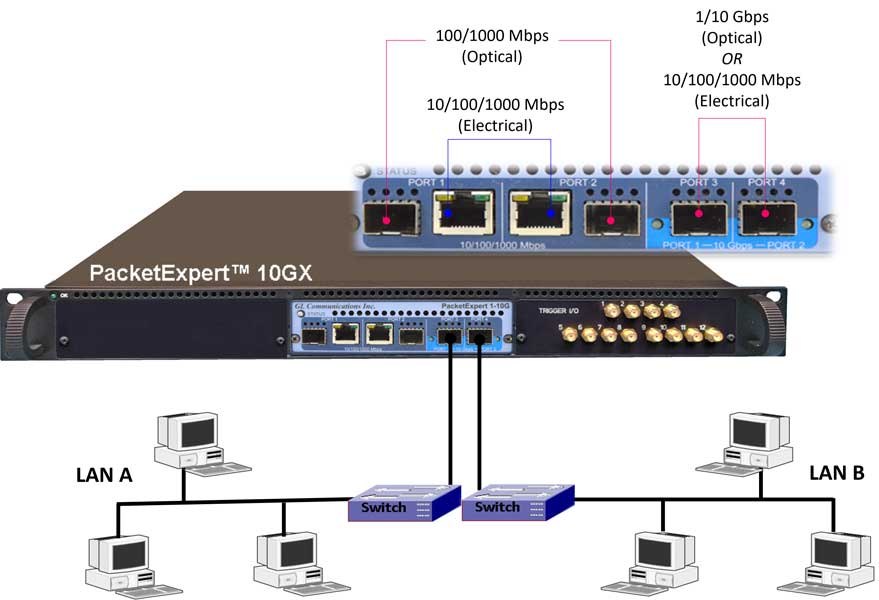
IPNetSim™ on PXN100 (Multi-Stream/Single Stream WAN Emulator) connecting 2 network end points
WAN Emulation includes various real-world impairments such as Bandwidth, Latency, Packet-Loss, Error Insertion, Reordering, and Duplication, to check the performance of end equipment to real world impairments. These settings can be applied for the selected 16 unique streams on 1Gbps link and 4 unique streams on 10Gbps link independently in each direction.
Traffic (bidirectional streams) can be processed at wirespeed (1Gbps or 10Gbps). Bidirectional streams can be configured as a symmetrical (identical WAN impairments in both directions) or asymmetrical (different WAN impairments in each direction). WAN impairments can be configured independently for each stream. When WAN Emulation is started by the user, the impairments are introduced into the traffic as shown below.

Impairing Multi-streams over P1->P2 and P2->P1 Link
In single stream mode (IPLinkSim™), all the incoming traffic is streamed as a single link, which can be impaired with various link conditions such as Bandwidth Control, Latency, Packet Loss, Packet Reordering, Packet Duplication, Error Insertion emulating real-world scenarios.

Impairing Single stream over P1->P2 and P2->P1 Link
Stream Definition
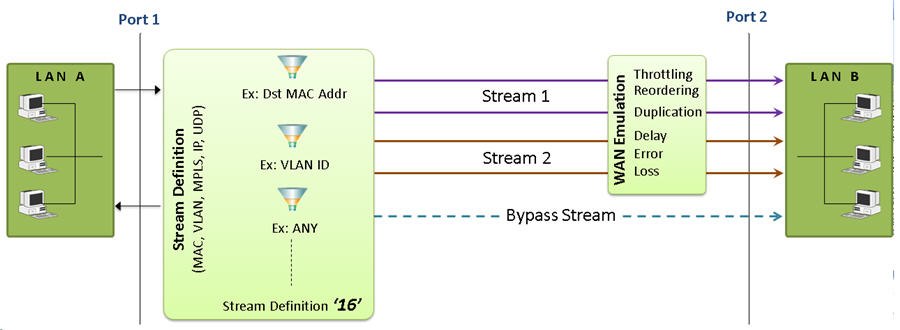
As depicted in the figure, IPNetSim™ includes a powerful “Stream Definition” feature that permits user to configure MAC, IP, VLAN, MPLS, UDP header fields to classify the traffic flows.
There are two actions for the stream definitions:
- Stream: Packets matching the stream definition are sent as specified stream.
- Bypass: Packets not matching the stream definitions are forwarded without emulation.
For each stream, user can define the stream parameters separately for each direction (P1 ->P2 and P1 <- P2). Streams can be defined in two modes – Packet Mode or Raw Mode.
In Raw mode, user can select a 120 byte window anywhere within the frame (starting from MAC Destination Address field till the end of Payload) to compare and identify the stream using raw hex data (120 bytes) and an offset. User can also define a corresponding 120 byte Hex mask, so that each bit can be set to ‘Compare’ or ‘don’t care’ conditions. For each stream definition, offset can be set to any byte within the packet (from 0 to 2047) which gives flexibility to define any fields within any protocol headers, and even the payload
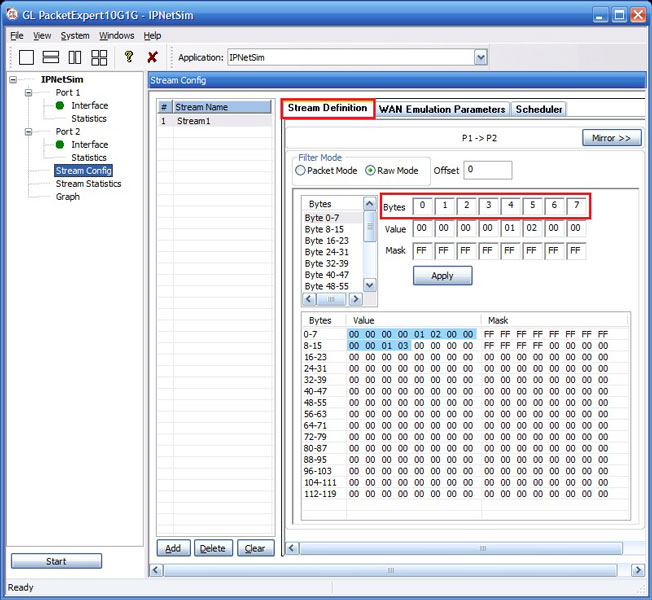
Stream Definitions in Raw Mode
(16 streams on 1G ports)
In Packet mode, each field can be compared against either a fixed value, a range of values or ANY value. Various packet field values can be edited directly as per the layer stack (L2/L3/L4) selected. Streams can be defined based on various fields like Source/Destination MAC Address, VLAN Id, MPLS Label, Source/Destination (IPv4 and IPv6) Addresses, Source/Destination UDP ports etc.
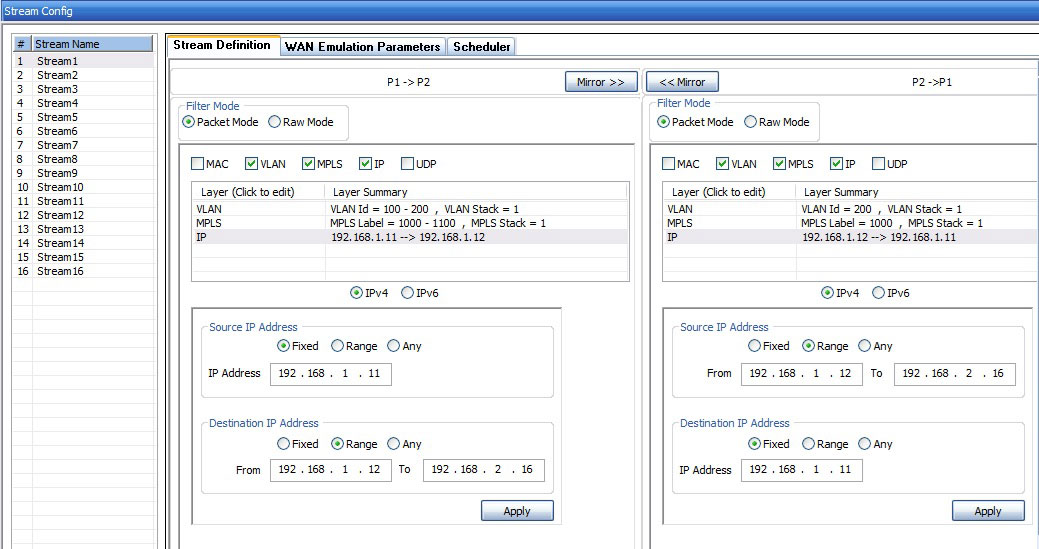
Stream Definitions in Packet Mode
(16 streams on 1G ports)
Stream Statistics
This option provides real-time transmission statistics for each stream (16 streams on 1 Gbps ports and 4 streams on 10 Gbps ports) over the emulated bi-directional link (P1-P2) / (P2-P1). The statistics include Tx and Rx frame statistics for each port, Dropped Packets (due to Bandwidth Control), No. of Packets with Errors, Dropped Packets (due to Packet Loss), Duplicated Packets, and Reordered Packets for varying durations.
Stream Throughput Graph
The real-time Throughput of each stream, plotted as rate against time, is displayed in the form of a line graph. All the streams (16 streams on 1G ports and 4 streams on 10G ports) throughput can be viewed together, or user can select or deselect each stream to view separately. Graphing is supported from 5 seconds up to 7 days.
Link Statistics
This option provides real-time transmission statistics of the traffic over the emulated link (P2-P3)/(P3-P2) in each direction. The statistics parameters include Dropped Packets (Bandwidth Control), No. of Packets with Errors, Dropped Packets (Packet Loss), Duplicated Packets, Reordered Packets, and Background Traffic Bandwidth, for varying durations.
Link Throughput Graph
The graph displays the real-time Throughput of the link, plotted as rate against time, in the form of a line graph. The Graph can be viewed for a single link or both the links together.
WAN Link Impairments
GL's IPNetSim™ WAN emulator is capable of emulating a WAN link, and introducing typical WAN impairments like Bandwidth Throttling, Latency, Jitter, Packet Loss, Packet Reordering, Packet Duplication, Packet Corruption, , Error Insertion, etc.
IPNetSim™ supports user defined streams to classify the traffic into up to 4 streams (for 10G and 2.5G link) and 16 streams (for 1G link), and applying separate impairments for each stream independently, thus emulating multiple WAN links within a single device. It also supports bi-directional full wirespeed emulation i.e., approximately 30 million packets/sec in each direction aggregating to a total of 60 million packets/sec.
IPNetSim™ has the capability to better model real-world impairments such as Packet Loss, Packet Reordering, Packet Duplication, and Packet Error Insertion with Periodic and Random options, which are briefly discussed below:

Bidirectional WAN link Emulation
Packet Loss Impairment
Packet loss is to simulate the devices causing the overload network or underperforming network conditions. Packet loss model includes Periodic and Random Packet loss options. In Periodic Loss, packet drops occur at regular intervals, making the loss predictable. On the other hand, Random packet loss involves packets being dropped randomly without any specific pattern. In both cases, the overall packet loss rate remains the same, but the method of selecting which packets to drop differs.
- Packet Loss Rate: Packets are selected to drop at regular intervals/events based on the number of received packets
- Window Size: Flexible Packet dropping configuration, customize Minimum Frames, Maximum Frames, and Drop After Packets to control intentional packet drops
Packet Reordering
Packet reordering model includes Periodic and Random Packet Reordering options. In Periodic option, the packets are reordered at constant specified rate. While in Random option, packets are randomized for reordering, but still maintain the specified Reorder rate.
Once a packet has been selected for reordering, it will be held for a certain amount of time before being reinserted into the stream. The delay can be configured in terms of time (milliseconds), or Packet offset (number of frames). During Packet offset delay, the reordered frame will be held until the configured offset frames are received, before being reinserted into the stream. The offset selected at run time will be a random value between the maximum and minimum defined value range.
Packet Duplication
Packet Duplication model also includes Periodic and Random Packet Duplication options. In Periodic Duplication option, the packets are duplicated at specified rate periodically. In Random Duplication option, the selected packet is duplicated (based on the rate) randomly, but maintaining the duplication rate.
Packet Error Insertion
Packet Error Insertion model also includes Periodic and Random Packet Error Insertion options. In Periodic Error Insertion option, the start of frame and end of frame byte offsets specifies where exactly in the frame to inject errors. In the Random Error Insertion option, the packet will be randomly selected for error insertion (based on the rate), but the error insertion rate is maintained.
Impairment Scheduler
PacketExpert™ includes Scheduler feature to automate stream impairment. Scheduler reads Packet Loss(%), Latency(msec), and Bandwidth(Mbps) impairment values from a compatible csv file (generated from MTGA application) for both the link directions (P1→P2) and (P2→P1), which can be used to impair the selected stream. The applied impairment for each stream can be viewed graphically as well.
The following is the Bandwidth (Mbps) graph plotted against Time (Sec) for the selected stream as per the values defined in the csv file.
WAN Link Impairments
GL's IPLinkSim™ WAN link emulator is capable of emulating a WAN link, and introducing typical WAN impairments like Bandwidth Throttling, Latency, Jitter, Packet Loss, Packet Reordering, Packet Duplication, Packet Corruption, Logic and FCS Error Insertion.
IPLinkSim™ supports single stream only and applies the impairments to the traffic. In addition to the impairments in multi-stream (IPNetSim™) application, IPLinkSim™ also supports congestion emulation by generating background traffic.
The link emulator has the capability to better model real-world impairments with Periodic and Random options, which are briefly discussed below:
Packet Loss Impairment
Packet Loss can be introduced either Automatically or Manually. For both automatic and manual, user can choose to drop a single packet or a burst of packets, at a time.
- Automatic Packet Loss: Loss rate can be configured to determining the frequency at which packets are dropped. There are two options available: Periodic loss and Random packet loss. In periodic loss, packet drops occur at regular intervals, making the loss predictable. On the other hand, random packet loss involves packets being dropped randomly without any specific pattern. In both cases, the overall packet loss rate remains the same, but the method of selecting which packets to drop differs
- Manual Packet Loss: This allows user to manually drop either a single packet or burst of packets at run time. This drop will be in addition to the rate loss, if active
Packet Reordering
Packet reordering can be done either Automatically or Manually. An Automatic packet reordering model includes Periodic and Random Packet Reordering options. In Periodic option, the packets are reordered at constant specified rate. While in Random option, packets are randomized for reordering, but still maintain the specified reorder rate.
Once a packet has been selected for reordering, it will be held for a certain amount of time before being reinserted into the stream. The delay can be configured in terms of time (milliseconds), or Packet offset (number of frames). During Packet offset delay, the reordered frame will be held until the configured offset frames are received, before being reinserted into the stream. The offset selected at run time will be a random value between the maximum and minimum defined value range.
The Packet Reordering model also includes Manual Packet Reorder option to reorder a packet instantaneously at run time. When selected, it will immediately reorder a single packet.
Packet Duplication
Packet duplication can be achieved through two methods: Automatic and Manual.
The Automatic Packet Duplication model provides two options: Periodic Duplication and Random Packet Duplication.
In Periodic option, packets are duplicated at a specified rate in a periodic manner. This means that packets are systematically copied at regular intervals according to the specified duplication rate.
In Random option, packets are randomly selected for duplication based on the specified duplication rate. This introduces variability in the duplication process while ensuring that the overall duplication rate remains consistent.
The Manual Packet Duplication option allows for instantaneous duplication of a single packet during runtime. This provides the flexibility to selectively duplicate specific packets as needed.
Packet Error Insertion
The Packet Error Insertion model provides users with both Automatic and Manual error insertion options.
Automatic Error Insertion offers two methods: Periodic Error Insertion and Random Packet Error Insertion. In the Periodic Error Insertion option, users can specify the byte offsets at the start and end of the frame where errors will be injected. This allows for precise control over the location of error insertion within the frame.
In the Random Error Insertion option, packets are randomly selected for error insertion based on the specified error insertion rate. However, the overall error insertion rate is maintained consistently.
On the other hand, the Manual Error Insertion option allows users to manually introduce errors into a single packet during runtime, providing flexibility and control over the error injection process.
FCS Error Insertion
Frame Check Sequence (FCS) refers to additional checksum characters that are added to a frame to detect errors. This feature allows users to simulate errors that typically occur due to interference, incompatible devices, or edge devices like gateways. In this scenario, the FCS bytes within the frames are intentionally corrupted.
Users have the choice to insert FCS Errors automatically or manually
Testing Satellite WAN Links
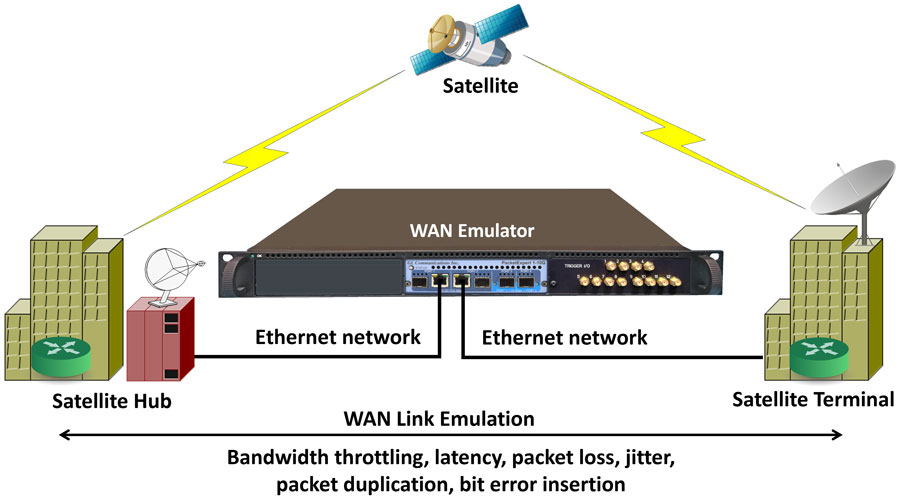
Application performance over WAN networks can be highly sensitive to bandwidth, latency, jitter, loss, and other WAN impairments. Testing these applications on the local network generally fails to identify critical issues that impact the end user experience. Fortunately, GL provides a WAN network emulation appliances that makes it simple and affordable to test applications in the lab under real-world conditions, ensuring smooth roll-outs of new applications and helping to optimize the performance of the applications for the end-users.
Resources
| Item | Description |
|---|---|
| PXN100 | PacketExpert™ 10GX |
| IPN507 | IPNetSim™ & IPLinkSim™ Options for 1G, 2.5G and 10G |
| Brochures |
|---|
| Presentations |
|---|
